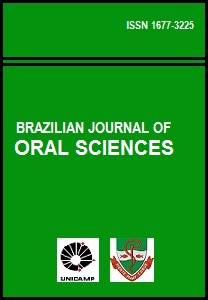Abstract
Aim: The aim of this study was to evaluate halitosis parameters and sialometry in patients subjected to head and neck radiotherapy compared to patients with periodontal disease, establishing a relationship between oral concentration of volatile sulfur compounds (VSCs) and tongue coating presence, salivary flow rate and BANATM test. Methods: Thirty-eight patients were examined and divided into 2 groups: group I: patients with chronic generalized periodontal disease previously diagnosed and not treated; group II: patients subjected to head and neck radiotherapy. All volunteers were subjected to halitosis measurements through a sulphide monitor, evaluation of tongue coating weight, stimulated and non-stimulated sialometry and BANATM test. Results: The results were analyzed by analysis of the variance, Pearson’s correlation coefficient and Student’s t-test, showing that both groups presented halitosis. There was also a relationship between tongue coating presence and VSC levels in both groups and the irradiated patients showed lower salivary flow rates. Conclusions: Under the tested conditions, it may be concluded that halitosis can be considered as an adverse effect of radiotherapy, associated with low salivary flow and poor oral health, which seems to be the main contribution to bad breath, since patients with periodontal disease also showed halitosis.The Brazilian Journal of Oral Sciences uses the Creative Commons license (CC), thus preserving the integrity of the articles in an open access environment.
Downloads
Download data is not yet available.

